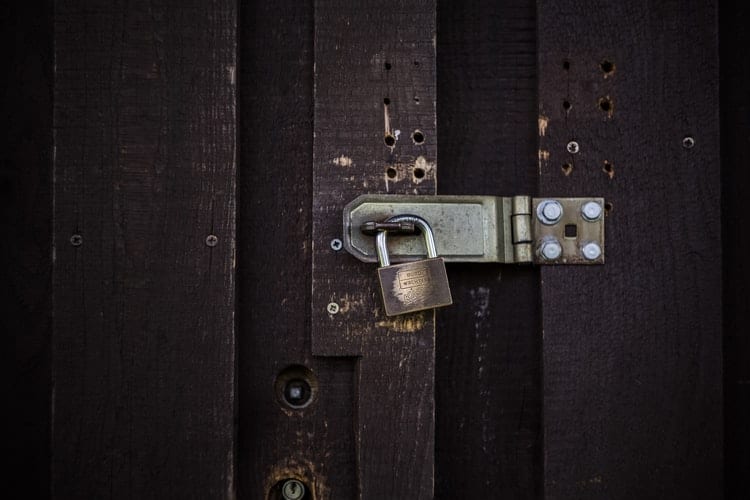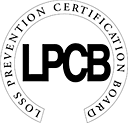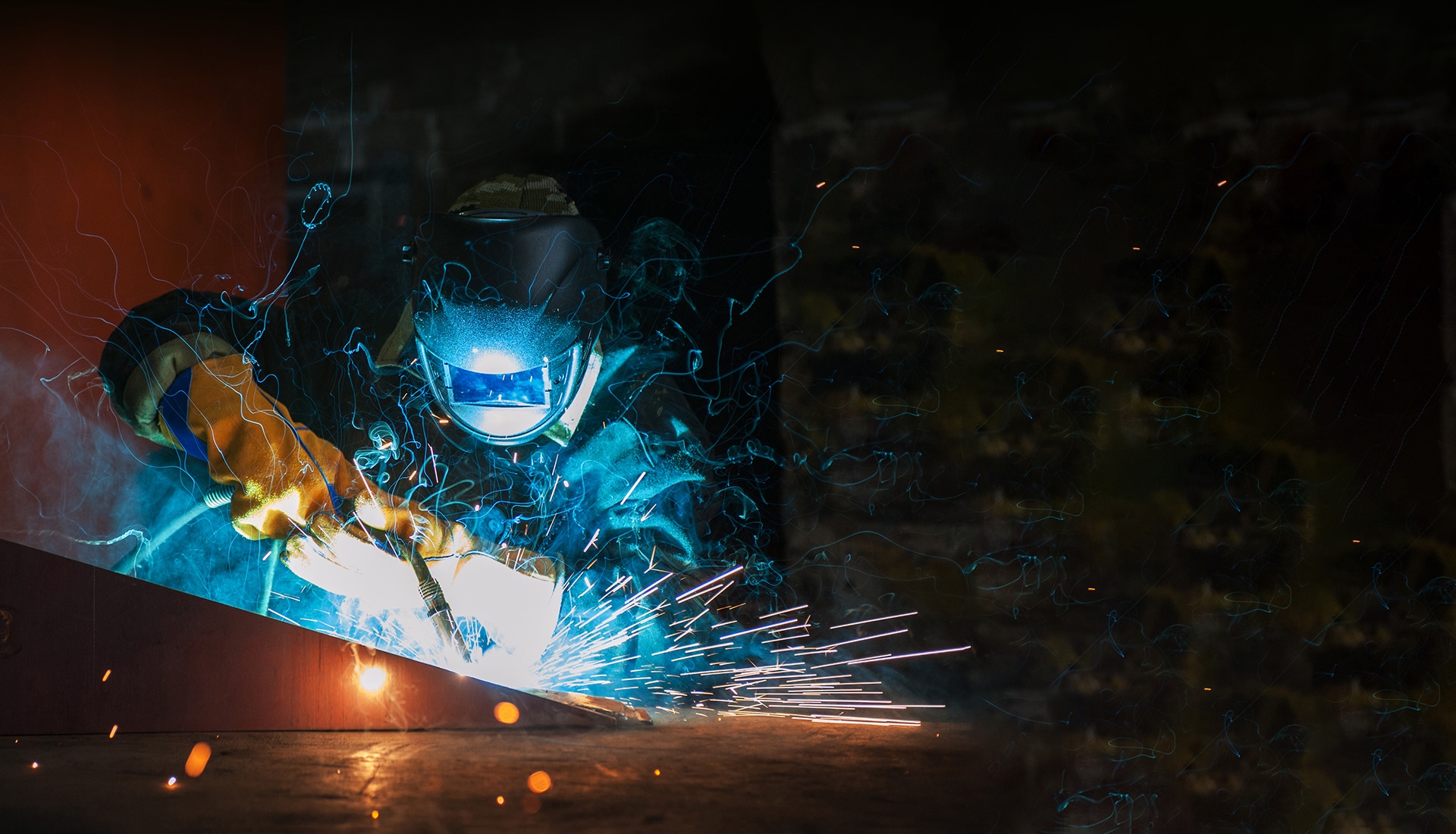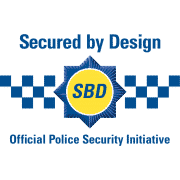5 components that ensure a reliable security door
As security systems get more sophisticated, thieves become more determined to gain entry to a building. Security should be approached with a layered design to deter and delay potential intruders. A security door should be combined with other measures; flood lights, CCTV cameras, alarms etc. intended to draw attention to an attempted attack. Few potential attackers will be willing to continue attempting to break into a well-lit building with CCTV and alarms sounding.
However, if an attacker isn’t deterred, a high-quality security door will act as the last line of defence. A certified security door will at least offer a delay to enabling unauthorised entry to a building. Nevertheless, with the right tools and enough time an experienced burglar could defeat even the highest quality security door. Therefore, it is vital that the security door is fitted with appropriate components to delay unauthorised access for as long as possible.
There are many components that make the difference between a reliable and unreliable security door. A door is only as strong as its weakest component, so it is vital they are integrated and used together. Below, we’ve listed the most important components on a security door:
Lock
According to West Yorkshire Police, ‘Smash and Grab’ is the most common method of gaining entry to a building during a burglary. The locking system is often the weakest area on a door, so it’s the most targeted place to smash or force.
We supply a range of anti-drill, anti-pick and pattern protected security locks, making it extremely difficult to gain unauthorised entry. We supply all standard OUTA-DOR’s when supplied with Sashlocks or Deadlocks with a TS007 cylinder and escutcheon set.

Solid timber core example
Core
We manufacture ROBUST doors using a range of infill core options – including mineral wool, polyurethane and honeycomb cardboard. Depending on the level of security specified, we manufacture our security doors with a different design. A solid timber infill reinforced with localised steel sections at strategic points on the door, combined with drill resistant sheeting is used at higher levels. The internal core strengthens the door leaf, making it considerably harder to bend or cut through the door.
Hinge
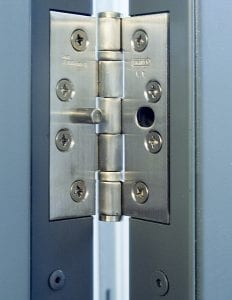
Hinge with dog
If a door opens outwards, the hinges will be located on the outside of the door – making them especially vulnerable to attack. An experienced burglar can dismantle a simple hinge with ease by removing the hinge pin. This renders the hinges useless, making it far easier to pull the door away from the frame and gain entry.
At ROBUST, we stock a variety of hinges suitable for all security requirements. For outward opening doors, hinges fitted with dog bolts are most suitable. These prevent the removal of a door if the hinge knuckle is attacked. For added security, we also stock a dog bolted continuous hinge. This consists of a full-length hinge designed to prevent the door being pried from the frame – due to the continuous design. They can also hold more weight than a standard hinge, meaning they can be fitted to heavier duty doors.
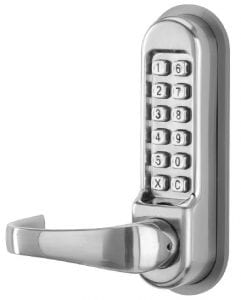
Mechanical keypad access control
Access control system
An access control system is a means of preventing unauthorised personnel from entering a building or room. This can come in the form of a passcode or swipe card etc. and will help to secure people/possessions inside a building.
However, not all break-ins come in the form of a ‘Smash and Grab’. Intruders sometimes gain access by stealing a key card – or worse – gathering inside information of a password. If an intruder gained entry via this method, it would be devastating to a business. Without any sign of forced entry, an insurance claim is likely to be invalid, so it could prove to be very costly. To counter this, only give key cards/passcodes to trusted employees, changing passcodes regularly to prevent unauthorised access with old codes.
Third-Party Certification
Although not a physical component, third party certification is massively important when selecting your ideal security door. It gives the end user peace of mind that every door has been manufactured to a minimum standard of security.
The LPCB’s (Loss Prevention Certification Board) Loss Prevention Standards are now a widely recognised third-party certification in the fire and security sector. They ensure security products meet and will continue to meet minimum standards of security performance. This certification is supported by Secured By Design – the official Police security initiative. SBD approve door products and list companies on their website, ready for end users to check their certification.
For further information related to ROBUST UK certifications, please click here.


